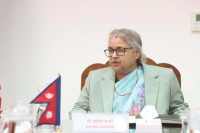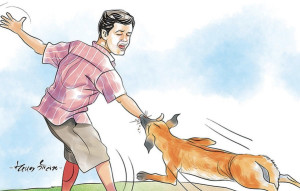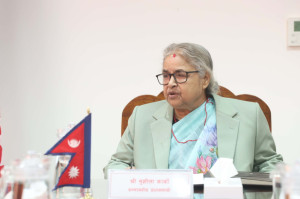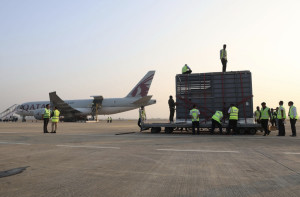Columns
Nepal on JE alert
Expanding and facilitating access to jabs can reduce the human toll of this virus to near zero.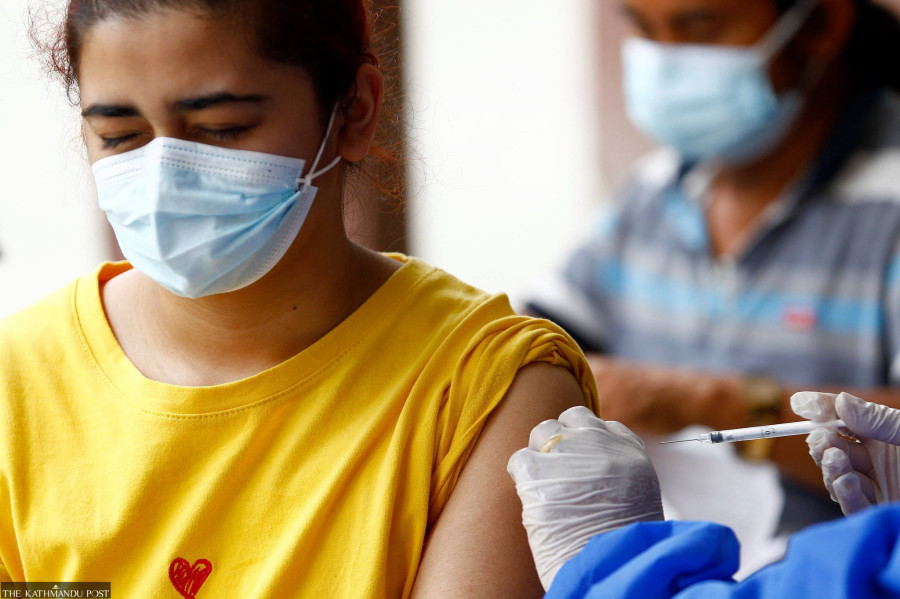
Dr Sher Bahadur Pun
A few days ago, a relative of a patient receiving treatment for Japanese encephalitis (JE) at a private hospital in Kathmandu asked me where he could get the vaccine against JE virus. He also shared an incident about a patient with a high-grade fever, who collapsed on the way back from buying medicine. The patient was later brought to Kathmandu for confirmation and treatment, as he was suspected of being infected with JE virus. According to him, around half a dozen more patients suspected of having the JE virus have also come to Kathmandu for treatment. Since all the patients were from Chitwan, there may be an ongoing JE outbreak, perhaps spreading rapidly in the area (Chitwan), indicating a comeback of the virus in Nepal after a nearly 19-year hiatus.
According to a recent media report based on data from the Family Welfare Division, at least 12 people have died of JE complications this year. In Nepal, the JE virus typically becomes active in June and July, and reaches its peak in August. In other words, the risk of JE infection in Nepal will continue for a few more weeks. As per the report, JE has been reported from 24 districts, predominantly in the Tarai region. Nearly two and a half decades ago, while I was serving as a junior medical officer at Sukraraj Tropical and Infectious Disease Hospital (STIDH), dozens of patients would die within a single week, almost all of whom were from the Tarai region. This alarming death rate occurred because the JE vaccine was either insufficient or not in widespread use in Nepal at the time. In recent years, however, cases of JE infection have been reported in Kathmandu and other hilly regions of Nepal. A study conducted in Kathmandu showed that nearly 75 percent of JE cases had not travelled outside the city. This suggests that the patients were more likely to have been infected by the bite of local mosquitoes. The study also reported a mortality rate of 20 percent among these patients. These findings suggest that Culex mosquitoes, the primary vectors of the JE virus, are abundant in Kathmandu and possibly in other hilly regions of Nepal. Although most JE outbreaks currently appear to be limited to certain districts in the Tarai region, the possibility of a large and severe JE outbreak in Kathmandu cannot be ruled out in the coming years. Thus, continued JE surveillance and improved access to the vaccine in hilly regions, including Kathmandu, should be a high priority.
JE is not a new virus to Nepal, and past successes in curbing its spread offer valuable lessons for policymakers. In 2005, following the deaths of nearly two thousand patients from a JE virus epidemic, Nepal succeeded in significantly reducing the JE mortality rate through the introduction of vaccines. Subsequently, the vaccine was incorporated into the national childhood immunisation program, which explains why the majority of children have not fallen victim to severe JE in Nepal since then. According to the Family Welfare Division, most JE-related deaths this year occurred in adults, primarily those above 40 years old, meaning they were not eligible for the vaccine when it was introduced in Nepal. Previously, the JE virus was thought to be a disease predominant in children under 15 years of age. Research since then has shown that adults are equally vulnerable to severe JE infection with a higher fatality rate than children. The concerned authorities should prioritise access to the JE vaccine for adults in the coming days. A few years ago, the Indian government also announced the introduction of the JE vaccine for adults in endemic areas.
JE is not only highly fatal, but even among survivors, approximately fifty percent also suffer permanent neurological disabilities. These can include persistent tremors, hearing or vision loss, impaired speech and memory, weakened speech articulation and motor deficits such as limb weakness or paralysis. No specific antiviral drug has been developed for the JE virus; however, an effective vaccine against the virus is available.
The reasons behind the current re-emergence of JE virus in Nepal should be analysed and addressed to bring the situation under control. There are several possible reasons for the re-emergence of JE in Nepal. First, since the widespread introduction of the JE vaccine, fatalities have remained negligible for a long period, leading many people to believe that JE was no longer a public health threat, even in areas with past outbreaks, causing them to overlook the importance of vaccination. Second, the JE vaccine may not have been adequately provided in JE-endemic areas by the concerned authorities. Third, the protective efficacy of the vaccine after the full course of doses needs to be assessed and previously vaccinated individuals should be informed whether booster doses are necessary.
The JE virus has made a comeback in Nepal after nearly a 19-year hiatus. While other vector-borne diseases are also on the rise in Nepal, JE should be taken more seriously as the virus is far more lethal than others. Experience in curbing infections has demonstrated that expanding and facilitating access to vaccination can effectively reduce the human toll of this virus to near zero. Therefore, the relevant authorities must focus on this issue and give it urgent attention.




 5.55°C Kathmandu
5.55°C Kathmandu




